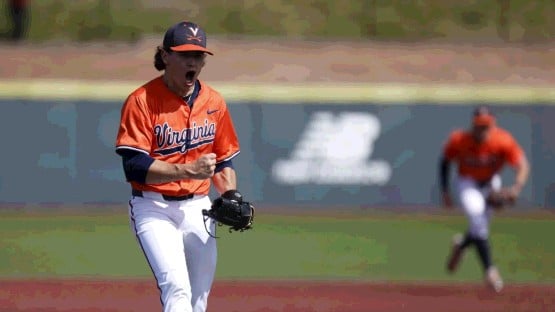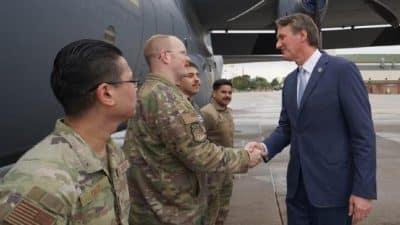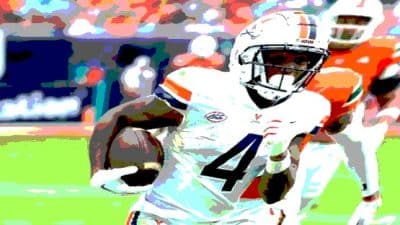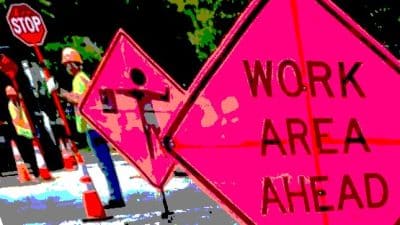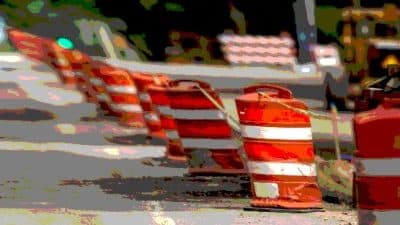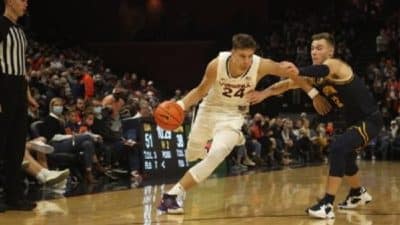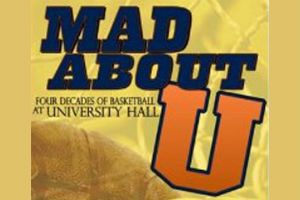
So be it.
Information from our work on Mad About U: Four Decades of Basketball at University Hall, which, despite all the posting I’ve been doing referencing the book this week, is out of print, basically out of lack of interest from the buying public, if you can rightly call a public not interested in buying a “buying public.”
Ahem.
The Grand Opening: Dec. 4, 1965
Virginia had joined the Atlantic Coast Conference in 1953 – and keeping up with the Dukes and North Carolinas and North Carolina States was very much a consideration as the athletics department considered its options regarding upgrades to its facilities.
Work got going on the $4 million University Hall project in 1960 with the selection of a Cambridge, Mass.,-based architect, Lawrence Anderson, who was well-known and well-regarded in architecture circles at the time. The design for the new arena that he came up with was nonetheless considered “unusual” by his otherwise admiring contemporaries, though, said Richard Guy Wilson, an architecture professor and architectural historian at UVa.
“What he was drawing from was the major central building for the Summer Olympics in Rome in 1960. There was a very well-known Italian architect, Pier Luigi Nervi, who had experimented with reinforced concrete-cable sorts of structures – which are basically circular in form,” Wilson said.
On the day of the building’s first game, Dec. 4, 1965, there was a sense of optimism about UVA Athletics in general, and basketball in particular, that hadn’t always been there with respect to sports teams wearing the orange and blue.
“I remember there was a lot of enthusiasm and excitement about the game – not only because it was the first game there, but because it was against a nationally ranked team in Kentucky,” said Jim Connelly, a 6’5” swingman who averaged 19.5 points per game in his three seasons on the varsity.
“We’d played our first game already at William and Mary and won that one, so we were off to better start than we had in those days sometimes. So there was a lot of expectation about it – and a chance to play a top-ranked team outside of the ACC,” Connelly said.
The game and the opponent – the Kentucky team that opened U Hall with a 99-73 thrashing of the home team would eventually lose to Texas Western in an NCAA final that was the subject of the 2006 feature film “Glory Road” – were only among the reasons for the enthusiasm and excitement.
“University Hall was dramatically different. The floor was flat, for one thing – no humps or bumps or soft spots,” Connelly said, referencing some of the more memorable features of Mem Gym.
“Building University Hall was obviously a significant step up for the program in terms of just visibility, having a facility there that could help with the recruiting program. There was a lot of enthusiasm about getting into a building that more replicated some of the facilities in other schools that we played in,” Connelly said.
“The facilities were just 10 times better. We had our own locker rooms and our own lockers – and there was less in the way of community showers and the kinds of things that you had in the old Memorial Gym. We had a state-of-the-art training room. We had accessibility to whirlpools without waiting in line. So it was a dramatic improvement over what the old facility was,” Connelly said.
Barry Parkhill’s Shot: Jan. 11, 1971
Bill Gibson had the second-ranked Gamecocks right where he wanted them.
Gibson had come up with a game plan to counter the powerful South Carolina squad that focused on basically taking the air out of the ball for long stretches – and it was working.
Virginia was within four points at the half and three points in the final stages when star guard Barry Parkhill drained two free throws to cut the deficit to a single point.
After a USC turnover, Gibson then signaled to his team to hold the ball for the last shot – which he was setting up during the timeout that he called with 00:18 showing on the scoreboard clock overhead.
The coach told his team that Parkhill was to take the final shot – and drew up a play that featured a modern-style isolation set that would allow Parkhill to back his defender into the lane to free himself up for a short jumper.
After the inbounds, the Cavaliers worked the ball around as the clock ticked down – 11, 10, nine …
A pass to Parkhill in line with what Gibson had envisioned on the sidelines gave the guard the opportunity to back his defender down.
Eight, seven …
Parkhill turned and fired from the right side of the foul line.
Six …
The ball went cleanly through the hoop, and following a last-second miss by South Carolina on the other end, UVa. had recorded its biggest basketball victory to date.
Nobody on hand for the historic win in University Hall – coaches, players, writers, fans – had even of an inkling of an idea of what it would mean to Virginia basketball that everything had gone according to Gibson’s plans.
Ralph Sampson’s Final Home Game: March 6, 1983
The national championship that Terry Holland had said was within reach had not yet come – but there was time. The big fella was still holding court in Ralph’s House – and as long as Ralph Sampson was wearing the orange and blue, anything was possible.
So when the ball ended up in the 7’4” center’s hands in the closing seconds of his final game in University Hall, against archrival Maryland, it seemed appropriate, given the situation.
The Cavaliers were down one, 81-80, when Sampson was fouled in the lane – giving him a chance to win the game at the free-throw line.
A fitting end this would be – the three-time national player of the year who had put UVA basketball on the map would ride into the sunset a conquering hero.
Ushers had dressed in tuxedos and evening gowns for the occasion – making it feel more like a performance than an athletic contest. That was actually the aura surrounding Virginia basketball throughout the Ralph Sampson years – the outcome of the game seemed scripted from before the opening tip; the only unknown was how the good guys were going to do it this time.
Sampson’s teams went 49-2 in his four years in Charlottesville – the losses coming earlier in his senior season, 101-95, to North Carolina, and in his freshman year, 63-61 to Maryland.
A certain amount of pressure, of course, comes when you are expected to win every time out – as the Virginia teams of the early 1980s were.
“The pressure was unbelievable,” said Holland, the head coach at Virginia from 1974 to 1990.
And the pressure sometimes got even to the steely Sampson – who could feel the tension ratcheting up hours before the opening tip of his final home game.
“I had a lot of friends and family who wanted to come to that game, and there were no tickets. I got to the game early, and they got to the game early, and we opened one of the back doors and let them in,” said Sampson, who grew up in Harrisonburg, an hour northwest of Charlottesville.
That was far from the front of his mind as he stepped to the line with the chance to give his team one last win in front of the home crowd.
His focus: “I was on the free-throw line, and we needed both to win.”
The crowd gasped when the first attempt bounded out – because now the best that could happen was that Sampson would make the back end and tie the game and send it to an uncertain overtime session.
That alternative looked good, though, when the second shot also missed.
As fate would have it, another Virginia senior, 6’8” forward Craig Robinson, got his hands on the rebound and tipped the ball back to a waiting Sampson, who took a step into the lane, turned and fired toward the basket.
Ballgame.
“If Craig Robinson wasn’t totally focused on keeping that ball alive, we would have lost that game by a point,” said Jim Larranaga, an assistant on Holland’s staff who, as head coach, led his George Mason University team on an improbable Final Four run in 2006.
It was something that Sampson will surely never forget.
“It was a great way to end a basketball game, and for me, it was a great way to end a career at University Hall,” Sampson said.
Hot Dog Night: Feb. 5, 1986
A terrible thought occurred to Kim Record a few days before the game – what if it works?
As the director of promotions in the Virginia athletics department during the 1980s, Record was trying to find a way to promote women’s basketball. Football, that was easy. Basketball took a little more work.
“It’s an event,” Record said of the six home football games most colleges play annually. “It’s the place to be. Everybody wants to be there. Basketball, men’s and women’s, you’ve got 10 to 15 events every year, midweek. It’s not as easy to create an event. That was our goal – to make it the place to be in Charlottesville on that particular night.”
The Virginia women’s team was coming off two successful seasons, including an ACC regular-season title in 1984 and a pair of NCAA tournament appearances in 1984 and 1985. The teams were a combined 43-15 over those two seasons and started the 1985-1986 year with 20 straight wins.
Once Debbie Ryan became the head coach at UVA, the administration slowly began getting behind the program. All those associated with the early years of Virginia women’s basketball might find that amusing, but it’s in part due to their struggles that it was true. Not only were scholarships available for women basketball players by the mid-80s, but the school actually promoted the sport.
“Virginia put money into women’s basketball long before it became fashionable to do so,” said Record.
Still, attendance was hovering around the 1,000-a-game mark. The quality of basketball being played by the women at Virginia was on the rise; now it was up to Record and others in the athletics department to figure out how to boost the attendance figures.
Their goal: break the ACC attendance record. Their plan: give free admission, hot dogs and soft drinks to everyone who came to the game.
“The other piece of it was finding a way to get people to talk about it without us spending a whole lot of money to market and publicize the event,” said Record.
But the buzz started to spread. Record had come up with the idea of a halftime game between members of the media, figuring it was a good way to get them to write about the event. The University also did traditional advertising, including sending Debbie Ryan every place it could to promote the game.
“It was probably a week before the game that people were really talking about it,” Record said. “Everywhere you went, somebody was talking about it.”
That’s when Record began to worry. What if people show up in droves? What then?
She would soon find out.
The team was ranked No. 3 in the country, and North Carolina was coming to town with a No. 15 ranking, so besides the hype surrounding the free admission and food, the game itself was pretty big.
By that Saturday morning, a good eight or nine hours before tipoff, fans were lining up outside University Hall for the game. From what Record remembers, the line stretched all the way to Emmett Street before noon.
At tipoff, it was really hard to tell exactly how many people showed up. The announced attendance was 11,174. Record thinks more than 13,000 people showed up. Either way, the number was well over capacity. U Hall’s official seating capacity was a little over 9,000, but for the bigger games, close to 10,000 people could squeeze in.
Unfortunately for UVA, one of those in the crowd on what will forever be known as Hot Dog Night was the local fire marshal. After he finished with his report, U Hall’s capacity was reduced to 8,392.
“So the promotion was a huge success in that we set a women’s record at that time for attendance, but it cost us about 1,800 seats for future years in University Hall,” said Holland. “That means we gave away free hot dogs and free admission to that game to lose 1,800 seats times at least 300 games since then – at an average of $20 per game, that comes to well over $10 million in lost revenue over the last 20 years for UVA. What a great promotion.”
Holland was only half joking.
In the end, North Carolina won 60-58, the only regular-season loss, as it turned out, for Virginia that season.
“Both teams played pretty poorly because they just weren’t used to it,” Ryan said of Hot Dog Night. “The game-winner was a kid throws the ball straight up in the air, and it went through the basket. I mean, it was insane. The whole game was insane.”
Richard Morgan Goes Bonkers: Jan. 15, 1989
Richard Morgan knew what was going on when he ran to save a ball from going out of bounds, turned when he got possession of the ball and fired it at the Virginia basket – and the ball went through the net.
“It was that kind of night,” said Morgan, a 1989 UVA grad, who put in one of the more memorable individual performances in Cavalier history on Jan. 15, 1989, when he poured in a career-high 39 points to lead the ‘Hoos to a 106-83 thrashing of archrival North Carolina.
Morgan scored just about every way conceivable – hitting a three as he fell into the stands, nailing another on a fast break, and then there were the back-to-back trifectas that still have people talking.
“The one that everybody talks about was the one where I hit one, stole the ball, drove up and hit another one. Back to back. Like, ‘I know he’s not going to take this one,’ ” Morgan said.
That he found his way into what athletes and sports psychologists call the zone against a North Carolina team that was ranked in the top 10 in the national polls was reason enough for Morgan to secure a special place in University Hall lore. And then you have to consider the backstory to the game – which saw Holland hand over the reins of the team to assistant and one-time heir apparent Dave Odom as the Virginia head coach recovered from stomach surgery.
“All I could think about was Coach being sick, and we’ve got to win this game,” Morgan said of the walkup to the game with the eighth-ranked Tar Heels.
The 1988-1989 Wahoos would eventually earn a spot in the NCAA tournament’s Elite Eight – knocking off a top-ranked Oklahoma team that had embarrassed Virginia a year earlier in Hawaii to get there.
But heading into the game with UNC, the team had dropped five straight and were just 7-6 overall.
“Nobody really gave us a shot to win the game,” said Bryant Stith, who was a first-year player on that Virginia squad.
But nobody foresaw a streaky-shooting two guard go 8-for-15 from three-point range and put up 39.
The Morgan make that sticks out to many Virginia fans unfolded just in front of where Dirk Katstra, a sophomore on the ’88-’89 squad, was sitting on the Virginia bench.
“He hit a three-pointer, and Carolina was trying to quickly inbound the ball and get it up the floor. Richard was kind of famous for looking out of the corner of his eye and trying to sneak a steal off of somebody, and he saw the ball getting ready to be passed up the sideline by him. He turned quickly, caught the ball, and in basically the same motion came back down, went right back up and shot a three. And he was probably – it seems that he was like about 10 feet beyond the three-point line. He made it, and the crowd went berserk,” Katstra said.
“But that shot was right in rhythm. That was just the kind of night that he had,” Katstra said.
Morgan’s lasting memories of the game are focused on what happened after the final buzzer.
“What happened with Coach happened shortly before that game, so right after the game, we didn’t even dress. We just put on our sweats and went over to his house to take him the game ball,” Morgan said.
“It was just winning the game and making sure that we were still OK for when Coach came back. That’s all I was thinking about. I wasn’t thinking, ‘I’m going to go in tonight and score 39.’ I never thought of that. It’s just the way the game went. Balls just kept coming to me, and nobody was around me. I was just shooting jumpers,” Morgan said.
Duke Steals One, With Some Help: Feb. 11, 1997
Virginia was out of timeouts, so Jeff Jones had to play the rulebook so that he could get his defense set up for the final five seconds.
The coach – whose Cavaliers were in a must-win game as far as their NCAA tournament hopes were concerned, given their 15-8 overall mark, and their sub-.500 record in the Atlantic Coast Conference, as the fourth quarter of the 1996-1997 season got under way – motioned for Willie Dersch to check in at the scorer’s table for Norman Nolan, who was at the charity stripe getting ready for the second of two free throws.
Lead official Rick Hartzell attempted to wave Dersch into the game immediately – until Dick Engel got his attention at the scorer’s table.
“Hartzell came over, and I told him, ‘No. This guy’s substituting for the shooter,’ ” Engel said, referring to Dersch, a freshman swingman from New York City who had come to Charlottesville with comparisons to Dream Teamer Chris Mullen bandied about around him.
The game was tied at 60 – and Nolan had missed his first attempt from the free-throw line at the start of the sequence.
So Jones was doing some assuming in thinking that his gambit to buy a few extra seconds to get his players set up for the endgame would have any effect on the final outcome.
It would, of course – just not in the way that Jones or anybody in attendance could have ever assumed.
“The crowd was so loud when Norman hit his free throw to put us up by one that when the buzzer sounded, you couldn’t hear it,” remembers Dersch, who instinctively made his way onto the court after the shot from Nolan put the Cavs up by one.
His teammates, knowing what their coach had been trying to do in substituting Dersch for Nolan, froze almost in place, looking back at the UVA bench for direction.
What they saw was Jones frantically trying to get their attention back on the court – where Duke point guard Steve Wojciechowski was taking the ball toward the Virginia hoop.
“Our guys were kind of waiting for me to come in – which wasn’t good, because they should’ve still played defense regardless, whether or not they forgot to sub me in,” Dersch said.
The crew at the scorer’s table, meanwhile, was scrambling to get the clock running – eventually doing so at the urging of UVA point guard Harold Deane as Wojo approached midcourt.
“I still don’t know what happened. Willie had checked in. I knew he was coming into the ballgame. The referee knew that he was going into the ballgame. But he didn’t beckon him into the ballgame after the foul shot was made,” said Engel, who worked the scorer’s table in University Hall for 30 years.
Wojciechowski blew past Deane on his way to the lane – where he met Nolan. Tim Higgins blew his whistle – calling a foul on Nolan.
The scoreboard clock above the U Hall floor read 00:02.7.
Hartzell, Higgins – who would work the NCAA title game six weeks later – and Zelton Steed huddled together to try to piece together what had just happened – and after reviewing replays of the sequence decided that there should be seven-tenths of a second on the clock to account for the lag in time in getting the ticker in operation.
That was what the rulebook calls a “correctible error.” Replaying time that has already run off the clock to make amends for a referee who forgets to stop play to bring in a sub is not a “correctible error.”
After a 10-minute wait that seemed to go on for hours, Wojciechowski calmly made both of his free throws. A desperation heave from Nolan was well off the mark.
And then … bedlam.
“I remember the chaos afterwards – the fans booing, players overreacting, knocking stuff over in the hallways,” said Curtis Staples, a 1998 Virginia grad who was a junior on that team.
“It was frustrating. The situation never should have occurred. Had the officials, in particular, had Rick Hartzell done his job correctly, there would have been no controversy,” said Jones, who is now the head coach at ODU.
“I was disappointed, because as a basketball team, we had been struggling, but trying to fight through it. And here we are all of the sudden being on the verge of upsetting a very good Duke basketball team, which would have been a very big win for us, and it’s kind of taken away,” Jones said.
That Hartzell and the crew that worked the contest were reprimanded by the league – all three officials who were a part of the fiasco were given one-game suspensions – did little to salve the ill feelings.
“I remember right after the game, (Virginia sports-information director Rich Murray) went up and asked him what had happened. And he said something like, ‘Dersch never subbed in,’ or something like that. But they spotlighted it, I remember, on ‘SportsCenter.’ They totally caught it. He was waving me in, and I said, ‘No, I’m going in for the shooter,’ ” Dersch said.
“I remember after that that it was made public that they had made a big mistake. That gave us just a small amount of satisfaction. I guess overall we were still pretty mad about it – because they didn’t change the outcome of the game,” Staples said.
“Games mean so much, and when you have situations like that, I guess the coaches realize it more than the players do, when you’re supposed to win games, especially ACC, it’s important that you pull them off one way or the other. Every game means something when it comes down to postseason,” Staples said.
“It was an emotional time – where we really did get cheated out of that game,” Staples said.
Interviewed for the Mad About U book nine years later, Jones was still upset over how the Feb. 11, 1997, game ended – and not just at the mistake by Hartzell at the scorer’s table.
“I think in the midst of the officials messing up, and there’s no doubt that they did, and the ACC dealt with it, one big thing was overlooked. Believe me, I’ve seen that replay over and over, I was frustrated by the call – and that was a terrible call by Tim Higgins,” Jones said, referring to the foul assessed to Nolan.
“So, number one, the horn blew, and Hartzell messed it up. And number two, that wasn’t a foul, and the game shouldn’t have come down to him shooting free throws and all that,” Jones said.
“It was extremely frustrating in a lot of different ways. And to have a tremendous effort by our guys taken away like that by the officials not properly doing their job, that’s frustrating,” Jones said.
The Last Ball in U Hall: March 5, 2006
The clock on the scoreboard hanging above center court read 00:25. Virginia was down one, but a turnover by Maryland’s D.J. Strawberry offered UVA coach Dave Leitao the opportunity to make the deciding move in the chess match that he had been playing with Terrapins coach Gary Williams all afternoon.
The shot clock was off – meaning that Leitao could work it so that his team had the last chance at scoring in the University Hall finale.
The emotion of the day had long since worn off. Down by as many as 18 points early in the second half, the Cavaliers outscored the Terps 32-12 over an 11-minute stretch to take the lead on a Sean Singletary runner with 3:52 to play.
Maryland, to its credit, didn’t fold up its tent and go home. A Mike Jones three-pointer from the left wing gave Williams’ charges a 71-70 lead at the 1:13 mark, and that’s where things stood when Leitao signaled for time.
It was clear what was in the cards. The first-year coach had faced a similar situation a month and a day earlier at home against Wake Forest.
Tied at 73, Leitao had called time with 16 seconds left to design a play featuring his star guards, Singletary and J.R. Reynolds, that saw Singletary drive around his defender to draw a double team and dish to a wide-open Reynolds on the right baseline for the game-winner.
His other option today would be a pick-and-roll with Singletary and swingman Adrian Joseph that would either free up Singletary for a teardrop jumper in the lane or the usually accurate Joseph behind the three-point line. But Joseph had been uncharacteristically off his game – 0-for-3 from behind the arc and 2-for-7 overall – and he had not even been in the lineup down the stretch.
Singletary, ultimately, was given the task of dribbling down the clock and then reviving the magic that he had brought to life at the end of the Wake Forest game in February.
Something was amiss from the start, though. Part of it was Maryland’s defense, which in the place of pressuring Singletary and risking allowing him to get into the lane sat back and offered him an open look at the basket from three-point range.
That wasn’t what was supposed to happen – just as the issues with spacing between Singletary and Reynolds weren’t on Leitao’s dry-erase board, either.
Singletary, confused by what was going on around him, picked up his dribble, then frantically shoveled the ball to a cutting Reynolds, who had carried the Cavs in Singletary’s stead en route to a 30-point outing.
Off balance, Reynolds flung a wild jumper at the rim with two seconds to go – as 8,392 people waited with baited breath to see where the ball would wind up.
It looked to be on line, in spite of it all.
But Reynolds, in his haste to overcorrect for the momentum that was carrying his body away from the basket, was too strong.
The ball bounded out of the hoop and bounced harmlessly to the floor as the final horn sounded.
Compiled by Chris Graham



